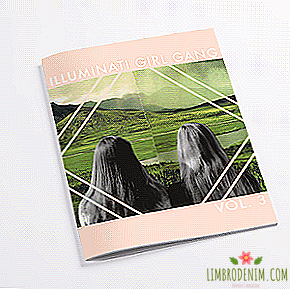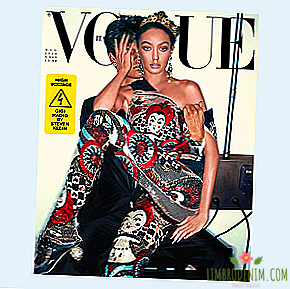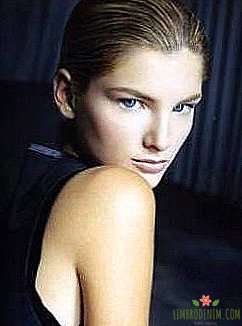What happens to the Russian fashion

Olesya Iva
No type of business, art or culture is associated with a person, his lifestyle and physiology are as closely as fashion. Fashion is a historical process, and by its state one can judge about many other processes taking place in the country. The phenomenon of Russian fashion (or its apparent absence) still raises many questions - a little less than 5 or 10 years ago. It seems that apart from the expert Alexander Vasilyev, even patriotic editors of great gloss do not seriously talk about her. We are starting a series of materials on what the Russian fashion industry looks like now, who its main players are, what it lacks and who to pay attention to.

By 2014, all major Western brands came to Russia, from Gucci and Prada to H & M and Topshop (although we still mourn the absence of COS and & Other Stories). A pool of Russian stamps has also been formed. It has a foundation: the mass market in the face of not very original INCITY, Love Republic and Zarina and more interesting Oh, my, Kira Plastinina and Trends Brands covers not only the capitals, but also the regions. The middle segment, which includes I am, Cyrille Gassiline and Luda Nikishina, is widely sold online and has already found its buyer. The tip of the iceberg is Russian suites like Gazinskaya and Sergeenko - such trendy titans as Colette and Net-A-Porter buy, and their shows are discussed by The Times and Style.com. For fashion shows, there are at least two fashion weeks with a big name: Mercedes-Benz and Aurora Fashion Week. The most diverse types of stores are open to customers, from Tsvetnoy and TsUM department stores, Aizel multibrand, Rehab Shop and Podium, Kuznetsky Most 20 concept stores and SVMoscow to democratic Click-boutique and Monoroom, as well as Oldich and Vintage Voyage vintage Men's FOTT and Brandshop. The unshakable Russian gloss will soon be 20 years old: ELLE, Harper's Bazaar and Vogue have been on the market since the 1990s, Interview, Numéro and PORT are catching up. It seems that the development of the fashion industry is finally done by professionals: the same RusMod company of Oksana Lavrentieva, who made Alexander Terekhov from the brand, is a real economic miracle, and the PR agencies Lunar Hare and RSVP, which are leading brands not worse than Karla Otto.
It seems that the fashion industry is developing only in Moscow? In our northern capital there is movement too. Historically, fashion in a European sense appeared in St. Petersburg, and then in the rest of Russia. If today the Moscow designers are influenced by clients and their finances, then Petersburg initially developed in a distinctive independent way. Even the St. Petersburg Fashion Week Aurora Fashion Week after the late Moscow project Cycles & Seasons looks the most decent among Russian fashion weeks: here even came Comme des Garçons (they have a multibrand in St. Petersburg), Marques'Almeida and Thom Browne. In addition, Aurora is engaged in the formation of a professional community and conducts a course of events with lectures Fashionomica and maintains a blog in the spirit of Business of Fashion. What Petersburg is doing is creating a community, not a sponsorship event like fashion weeks in Moscow, and it’s in this direction that the AFW team should move, not forgetting what we all have gathered here for - shows: Artyomov, Bevze and Shumov will not go far. The window to Europe is indeed such: AFW is more about interaction with the West and is similar to what Daria Shapovalova does for Ukraine.

To understand the processes taking place in Russia, one must leave Moscow - first, to Omsk or Petersburg

It is quite another thing - how Russian fashion actually looks like. Luxury and mass-market are well developed, but small shops with extremely successful purchases can be counted on the fingers of one hand. What can we say about democratic vintage shops, where you can dress for 100 euros from head to toe and at the same time cool. In Moscow and St. Petersburg there are two rather weak fashion weeks, when in all the world's fashion capitals (this is New York, Milan, London and Paris) they somehow manage with one, although there are ten times more interesting designers and shops there. Magazines that you want to read and save - in the afternoon with fire (Anzor Kankulov and Alena Stanislavovna, all your hope is on you). Russian designers, who are not ashamed to be placed next to foreign ones, can easily be counted on the fingers of one hand. And they are more expensive than the Alexander Wang, Carven or 3.1 Phillip Lim, who want to stand next to them. It is clear that units of designers arrive at Première Vision, production is difficult to find, seamstresses and designers are now expensive, and there is no investment at all.

From the outside, Moscow looks like a city in which fashion as an industry has already taken shape and functions with varying success, but the young designers still have a hard start here. In order to understand more deeply the processes taking place in Russia, one has to leave Moscow - for a start, to Omsk or Petersburg. Some St. Petersburg designers are a whole separate layer - a city where fashion has gone independent and avant-garde, with good luck may become Russian Antwerp, producing the most progressive young designers in the country. It is there that fashion is most alive now, and it is there that one can find answers to all the important questions: how fashion and art are connected, how to make a business from fashion passion independently and without investors who needs men's fashion in Russia, how things are with fashionable education in Russia and who needs the avant-garde today and how cultural codes affect our perception of fashion. All this is in the following materials.
Photo: Vika Gazinskaya, Cyrille Gassiline, Walk of Shame, Osome2Some




